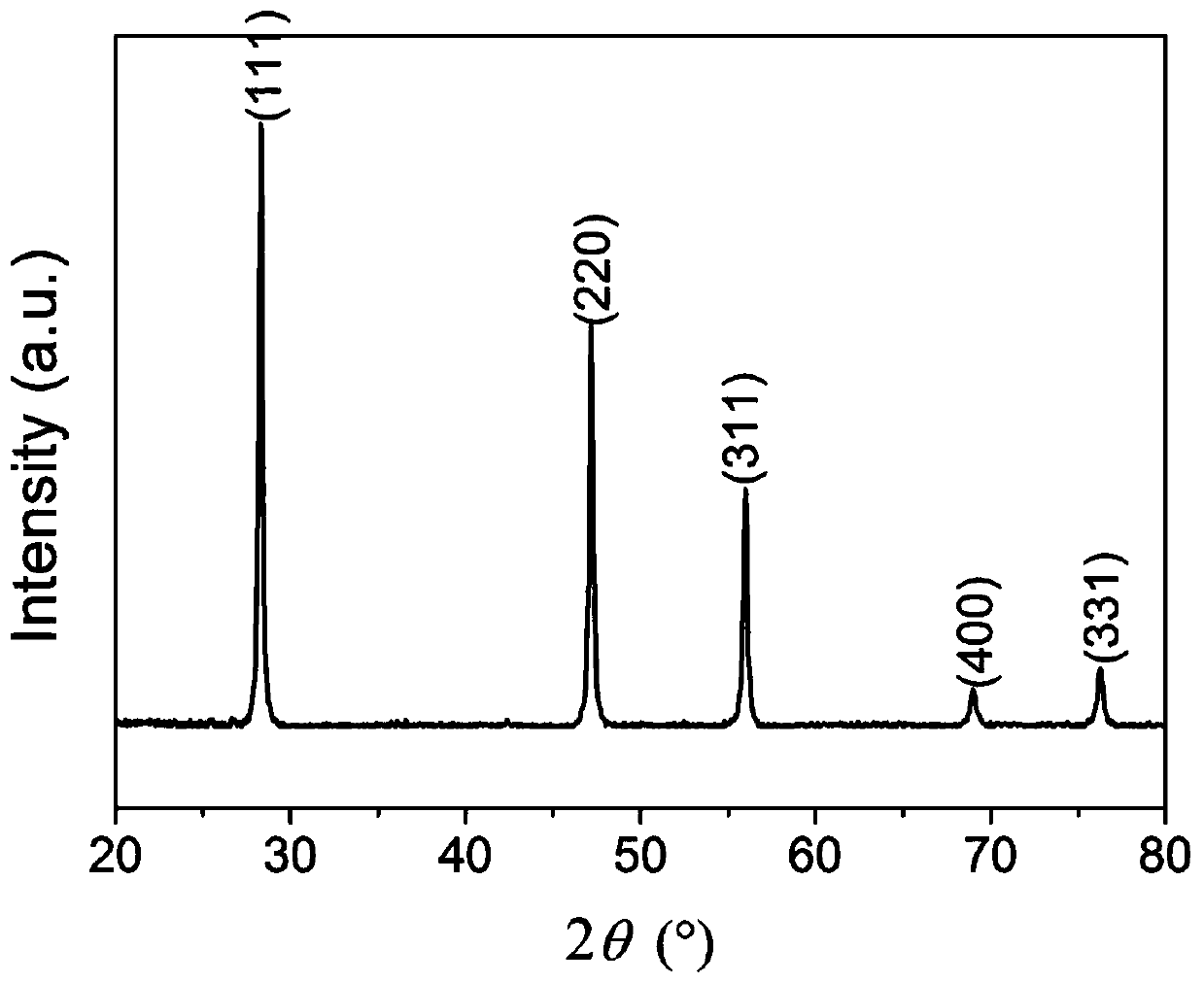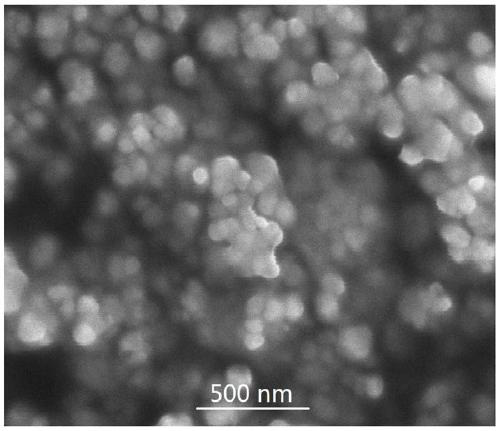High-efficiency low-temperature molten-salt preparation method of nano Si
A low-temperature molten salt, nanotechnology, applied in nanotechnology, chemical instruments and methods, silicon compounds, etc., can solve the problems of increasing the amount of AlCl molten salt, aggravating the corrosion of heating equipment, increasing the cost of materials, etc., to improve the reaction rate and reduction. degree of reaction, improved final yield, low cost effect
- Summary
- Abstract
- Description
- Claims
- Application Information
AI Technical Summary
Problems solved by technology
Method used
Image
Examples
Embodiment 1
[0025] (1) by SiO 2 The molar ratio to Mg powder is 1:2.3, and the quartz powder (SiO 2 Content 99.0%, particle size 500-1000 mesh) 6.0690g, Mg powder (particle size 50-100 mesh) 5.5902g, according to KCl, CaCl in low-temperature molten salt 2 , NaCl and AlCl 3 The molar percentage of 13.5%: 8.5%: 16.3%: 61.7%, the mass ratio of reactants (quartz powder and Mg powder) to low-temperature molten salt 1: 2.0, weigh KCl 2.1090g, CaCl 2 1.9768g, NaCl 1.9962g and AlCl 3 17.2392g, put the weighed quartz powder, Mg powder and low-temperature molten salt into a wear-resistant steel tank, add 320g of wear-resistant steel balls, fill the ball mill tank with argon, then seal the ball mill tank, and put it on the planetary ball mill Ball mill at room temperature at 450rpm for 5h, then place the ball mill jar in an oven, heat-treat at 160°C for 10h, then place the ball mill jar in ice water at 0°C for 1h cooling.
[0026] (2) Place the cooled ball mill jar on a planetary ball mill, mi...
Embodiment 2
[0030] (1) by SiO 2 The molar ratio with Al powder is 1:1.50, weigh white carbon black (SiO 2 Content 99.8%) 6.0203g, Al powder (particle size 100-200 mesh) 4.0472g, according to KCl, CaCl in low-temperature molten salt 2 , NaCl and AlCl 3 The molar percentage of 14.0%: 9.5%: 17.2%: 59.3%, the mass ratio of the reactant (white carbon black and Al powder) to the low-temperature molten salt 1: 2.5, weigh KCl2.3863g, CaCl 2 2.4106g, NaCl 2.2982g and AlCl 3 18.0778g, put the weighed white carbon black, Al powder and low-temperature molten salt into the wear-resistant steel tank, add 350g of wear-resistant steel balls, fill the ball mill tank with argon, then seal the ball mill tank, and put it in the planetary ball mill Ball milled at room temperature for 4 h at 500 rpm, then placed the ball mill jar in an oven, heat-treated at 170° C. for 12 h, and then placed the ball mill jar in ice water at 0° C. for 2 h.
[0031] (2) Place the cooled ball mill jar on a planetary ball mi...
Embodiment 3
[0035] (1) by SiO 2 The molar ratio to Al powder is 1:1.65, and the albite (SiO 2 The content is about 65%, particle size 50-400 mesh) 9.2435g, Al powder (particle size 100-200 mesh) 4.4519g, according to KCl, CaCl in low-temperature molten salt 2 , NaCl and AlCl 3 The molar percentage of 12.5%: 9.5%: 16.0%: 62.0%, the mass ratio of the reactants (albite and Al powder) to the low-temperature molten salt 1: 1.9, weighed KCl 2.1284g, CaCl 2 2.4080g, NaCl 2.1356g and AlCl 3 18.8808g, put the weighed albite, Al powder and low-temperature molten salt into a wear-resistant steel tank, add 380g of wear-resistant steel balls, fill the ball mill tank with argon, then seal the ball mill tank, and put it into the planetary ball mill Ball milled at room temperature at 450rpm for 5h, then placed the ball mill jar in an oven, heat-treated at 170°C for 12h, and then placed the ball mill jar in ice water at 0°C for 1.5h.
[0036] (2) Place the cooled ball milling jar on a planetary ball...
PUM
| Property | Measurement | Unit |
|---|---|---|
| particle size (mesh) | aaaaa | aaaaa |
| particle size (mesh) | aaaaa | aaaaa |
| particle size (mesh) | aaaaa | aaaaa |
Abstract
Description
Claims
Application Information
 Login to View More
Login to View More - R&D Engineer
- R&D Manager
- IP Professional
- Industry Leading Data Capabilities
- Powerful AI technology
- Patent DNA Extraction
Browse by: Latest US Patents, China's latest patents, Technical Efficacy Thesaurus, Application Domain, Technology Topic, Popular Technical Reports.
© 2024 PatSnap. All rights reserved.Legal|Privacy policy|Modern Slavery Act Transparency Statement|Sitemap|About US| Contact US: help@patsnap.com









